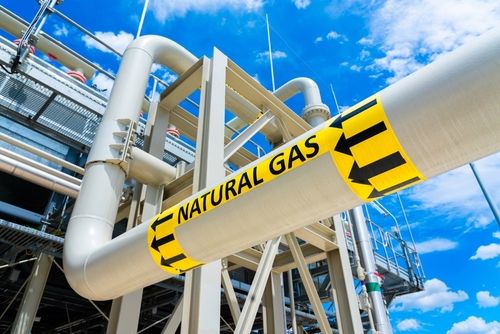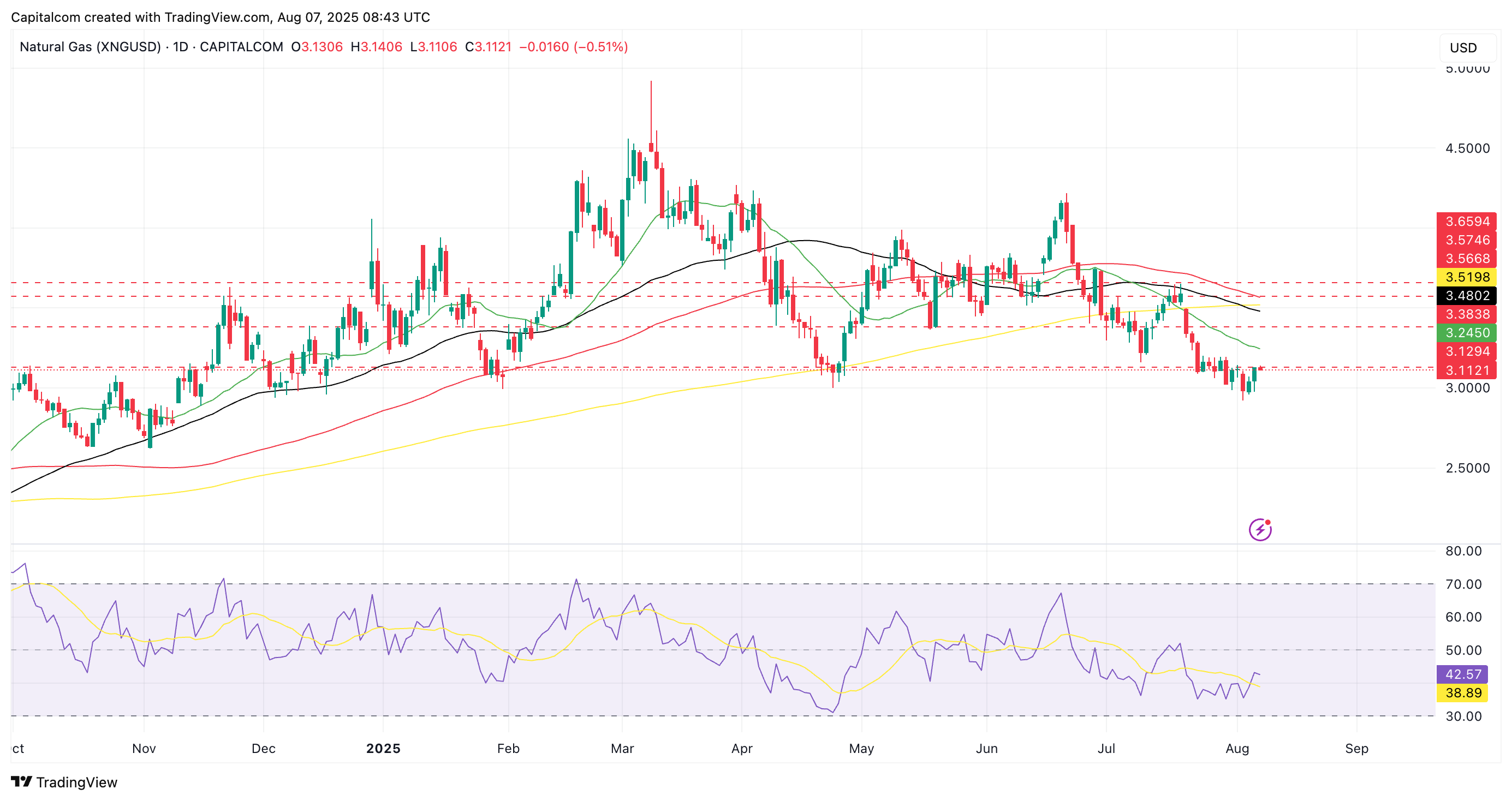Natural Gas hovers near critical $3 level
Natural gas prices toy with the $3 mark as sellers struggle to achieve a close beneath the crucial support level
Natural gas prices remain under pressure as the market continues to digest a combination of seasonal demand factors and broader structural trends. Following a brief recovery attempt last month, the commodity has resumed a bearish trajectory, once again testing a critical technical threshold around the $3.00 per MMBtu mark.
Since mid-June, natural gas has exhibited persistent bearish momentum, falling through multiple support zones. One of the most significant levels remains the $3.00 threshold, which historically has proven difficult to sustain above or below for long periods.
Notably:
- Natural gas struggled for months to break above $3 through late 2023.
- Recent price action shows repeated tests of this level without a decisive close below it.
- Each failed break has resulted in a short-term reversal, indicating the presence of strong buying interest at this level.
The current setup suggests that a firm close below $3.00 could mark a decisive shift toward a more long-term bearish bias, while continued resilience above this support could provide a base for a potential recovery.
Natural Gas (XNG/USD) daily chart

(Past performance is not a reliable indicator of future results)
From a fundamental perspective, natural gas remains highly sensitive to weather-driven demand, particularly for heating in winter and cooling in summer. Recent weakness has likely been influenced by reduced seasonal demand, limiting the near-term upside. Additionally, supply constraints and inventory dynamics continue to influence price trends, but have not provided enough bullish pressure to overcome broader softness in demand.
The price behaviour also reflects short-term weather forecasts, which can quickly shift trader expectations. As a result, volatility remains elevated, especially around established technical levels.
Looking ahead, natural gas is likely to continue to trade within a technically sensitive zone, with $3.00 acting as a critical pivot point. The market appears to be in a consolidation phase within a broader bearish trend, waiting for either a fundamental catalyst or decisive technical breakout to determine the next directional move.
The path forward will likely be shaped by short-term weather changes and their impact on demand forecasts, inventory data releases and production trends, and global energy market sentiment, including spillovers from crude oil and LNG flows.
Until a clearer narrative emerges, price action around the $3.00 level remains the primary indicator, offering clues into trader sentiment and potential breakout opportunities.